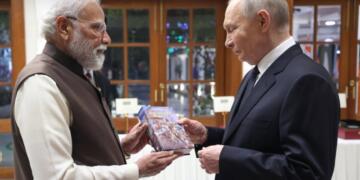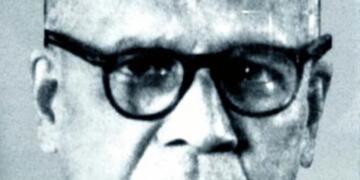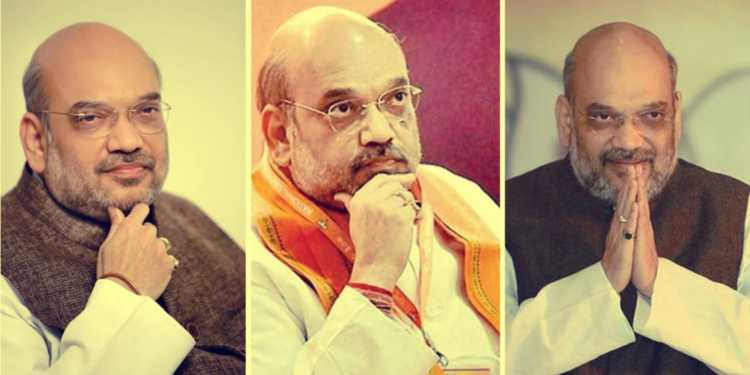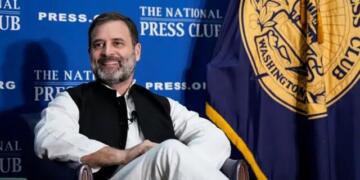Amit Shah first became a household name in 2010, when the mainstream media’s news-traders were crying hoarse clamoring for his resignation. Shah had been framed by the Congress government in the center for orchestrating a fake encounter as the Gujarat home minister. The ecosystem of spineless halfwits cultivated by the then government had cheered their political masters on, conducted a media trial and written Shah’s political epitaph.
The Congress Party for all its ills deserves complete credit for something they have mastered through the years: identifying political talent among the opposition ranks. Once the process of identification is complete, they come after these individuals in the most unscrupulous of ways.
They identified Narendra Modi and Amit Shah long before the duo’s party itself grasped the magnitude of their political prowess. But even that was too late for the Congress Party.
The duo, with Modi as the administrative brain and Shah as the political, has destroyed the Congress Party and its ecosystem in the most fitting of ways. Poetic justice, as some call it.
In 2013, the then Gujarat chief minister Narendra Modi was declared the prime ministerial candidate of the main opposition party BJP. His fate, just like every serious prime ministerial candidate, was dependent on one factor: how his party would fare in the state of Uttar Pradesh. Amit Shah, considered to be Modi’s lieutenant, was roped in to deliver the state of Uttar Pradesh into the party’s kitty. The party was fine with this decision. After all, it was Modi’s fate hanging in the balance, and this was a risk Modi was willing to take. Sections of the mainstream media reignited their tirade against Amit Shah and expressed their disapproval over the choice, while other sections laughed at the BJP for para-dropping a leader from Gujarat and hoping he would conquer Uttar Pradesh.
Those laughing back then were either completely ignorant, or had a short memory. The story of how the Congress Party’s back was finally broken in the state of Gujarat after years of complete hegemony, had eluded these members of the Lutyens cocktail circuit. Back in the day, Modi and Shah had moved from district to district in Gujarat and systematically annihilated the Congress Party. The robust and confident BJP machinery in the state, which wins election after election at every level with ease, was not created overnight.
Amit Shah landed in Uttar Pradesh in 2013, to lay the groundwork for the following year’s elections. Never having experienced the rough and tumble of Uttar Pradesh politics first hand, he arrived only with theoretical knowledge. The once formidable state unit, squeezed between two regional satraps of late, was fledgling. Anything I write describing how he went about changing that, will be an understatement.
Amit Shah altered the narrative. The minority community had a free hand in the state, and was running amok. The Muzzafarnagar riots were in a sense the giant culmination of a pattern prevalent throughout the state under Akhilesh Yadav’s leadership. Shah effectively brought the entire majority community under one roof, thus putting an end to caste-based politics, the bread and butter of the regional satraps. He took the campaign to the remotest of villages, on little trucks carrying Modi’s message of development. He convinced the party to allow Mr. Modi to contest from Varanasi, a strong political message considering the city’s place in India’s history, culture and religion. He bagged seventy-three of the eighty seats on offer.
Amit Shah had arrived. On the 16th of May 2014, the ecosystem watched two leaders they had undermined repeatedly emerge as influential political figures on the national stage. One would be their prime minister, and the other would continue altering the country’s political landscape for many years to come. The two men who had met for the first time as teenagers and harbored dreams to change the country, made the entitled elite cringe. Soon after Narendra Modi took over as prime minister, Amit Shah was anointed party president. The party, and just about everyone for that matter, knew there existed no abler politician.
Under Amit Shah, the party formed a government in Maharashtra for the first time. The election strategy was micromanaged by Shah himself, and if the recently held municipal elections are anything to go by, the party has taken pole position in the state for the long haul. Under him, the party formed a government in the northeast for the first time when they stormed into power in Assam. They formed a government in Haryana for the first time as well, and swept the Jammu region in the J&K elections. The states of Jharkhand, Uttarakhand and Uttar Pradesh were captured by the party again, after Amit Shah enthused the cadre and captured the imagination of the common man. The win in Uttar Pradesh was particularly significant, indicating that the level of support had not waned since 2014. Yogi Adityanath’s appointment was a gamechanger, and another kick on the ecosystem’s stomach.
One grasps the extent of Amit Shah’s machinations when one sheds light on what he has achieved beyond the electoral chessboard. Upon winning less seats than the Congress Party in Goa and Manipur, and upon realizing that no side had a clear majority, Shah moved quickly. In both states, he cobbled together a coalition, went past the halfway mark, and formed the government before the Congress Party could blink. During the presidential elections, he chose a non-controversial Dalit candidate that no party could be seen opposing. Those sitting on the fences supported Kovind wholeheartedly, and he was elected president. But nothing can be compared to the coup Shah pulled off in Bihar last week.
People say Amit Shah doesn’t consider an election lost until it is over. Apparently, he doesn’t consider a state lost even after losing the elections. Nitish Kumar’s discomfort of continuing his alliance with Lalu was played upon. The media was used effectively to expose Lalu’s family, making the alliance untenable. The evening Nitish struck, it so happened that the caretaker governor was in town and that Lalu had a court hearing in Ranchi the next morning. The BJP MLAs were on standby. Rumors about a potential 5 p.m. swearing-in filled the air, prompting the RJD to seek an 11 a.m. appointment with the governor to stake claim. The only problem was that the actual timing of the swearing-in ceremony was 10 a.m., allotted after Nitish staked claim at midnight. Now, the BJP is part of the Bihar government, the JD(U) will soon be part of the central government, and their MPs will strengthen the treasury benches. Lalu Prasad Yadav, the man who bounced back from every adversity, has finally been outfoxed.
The dynamism Shah has brought to the table is unparalleled. BJP is making inroads in every state, and increasing its vote-share in places it never dreamed of becoming a serious player, be it West Bengal, Kerala, Tamil Nadu or Telangana. The party is likely to break the Communist fortress in Tripura and the BJD fortress in Odisha soon. Shah doesn’t remain in one part of the country for long. He is constantly on the move, showing up at a different state every day. But from wherever he is, he controls the world’s largest political party. After all, he was the one who pushed the membership drive vigorously, and the party now boasts of over 11 crore members. He is a workaholic and a multi-tasker. For example, he could be in Uttar Pradesh addressing the cadre and sharing a meal with them, welcoming opposition MLCs to the BJP’s fold and discussing strategy with Yogi Adityanath. But at the same time, the wily Amit Shah is busy outmaneuvering Ahmad Patel and denying him a Rajya Sabha seat in Gujarat, touching base with Congress Party MLAs in Bihar and engineering a defection in Meghalaya.
Politicians struggle to keep one constituency or one state under their control, and even the cleverest of them have their Waterloo. Amit Shah knew that after Modi reached the pinnacle of Indian politics, the prime minister’s position, the next step on the ladder was survival. And how the BJP has survived, moving from strength to strength, consolidating as much as possible, consolidating continuously.































